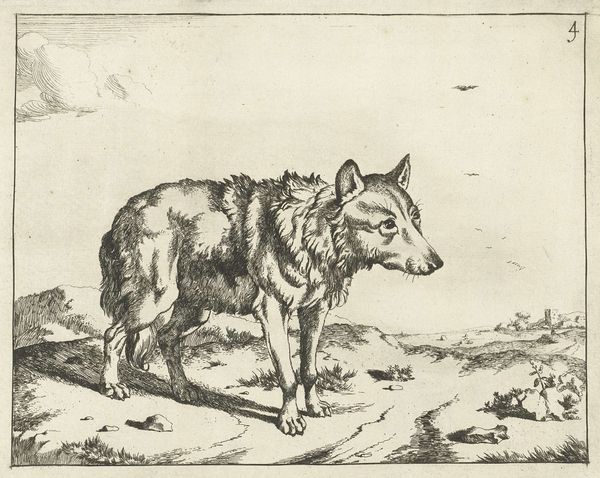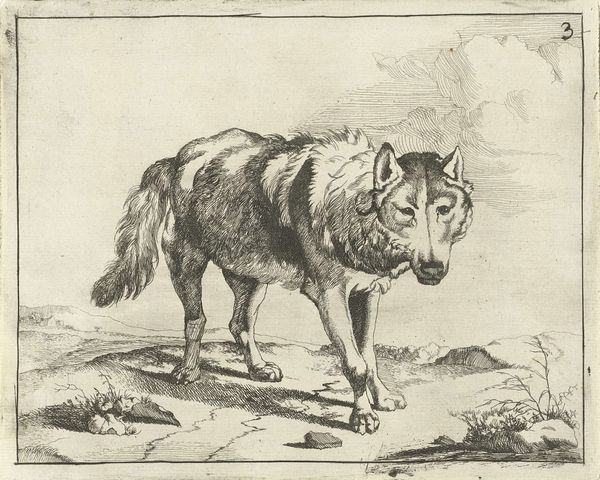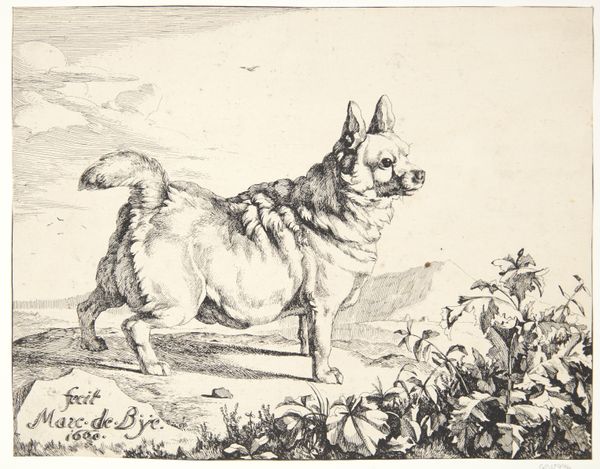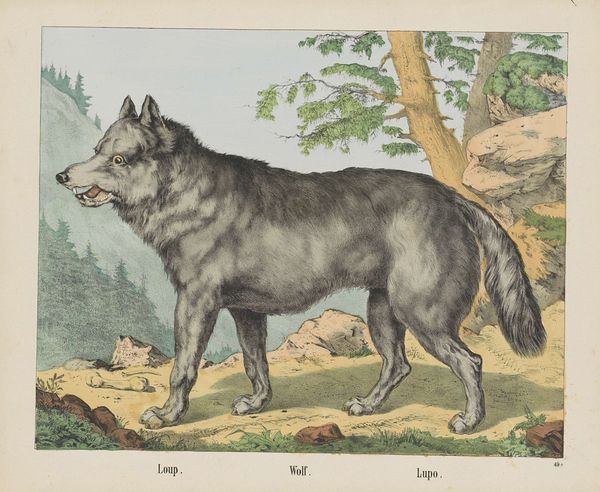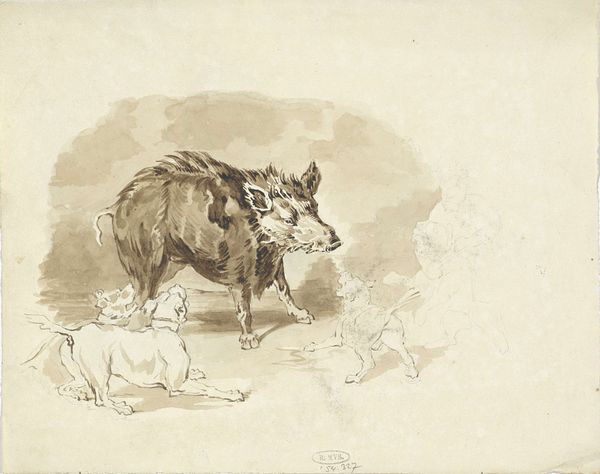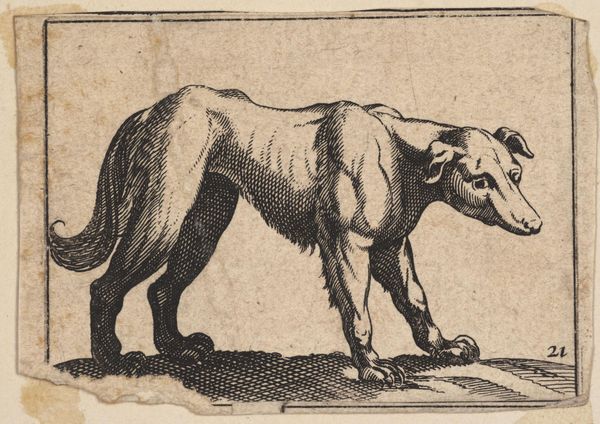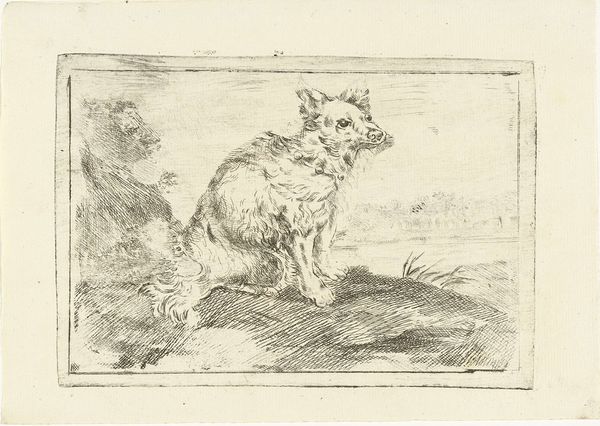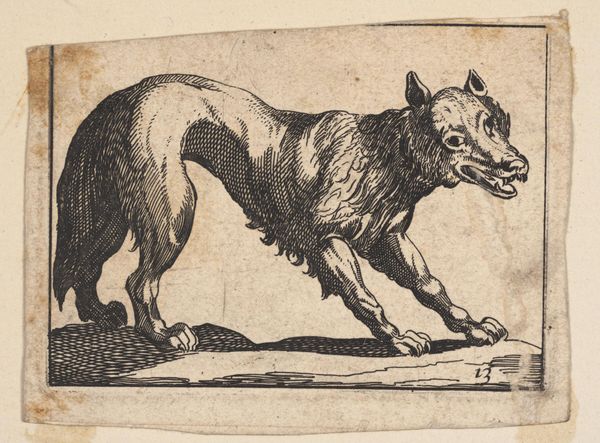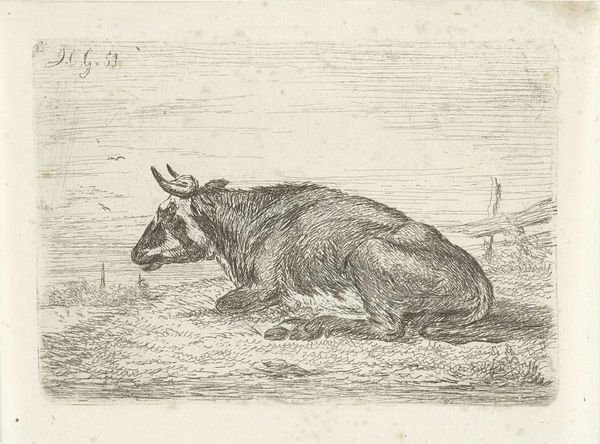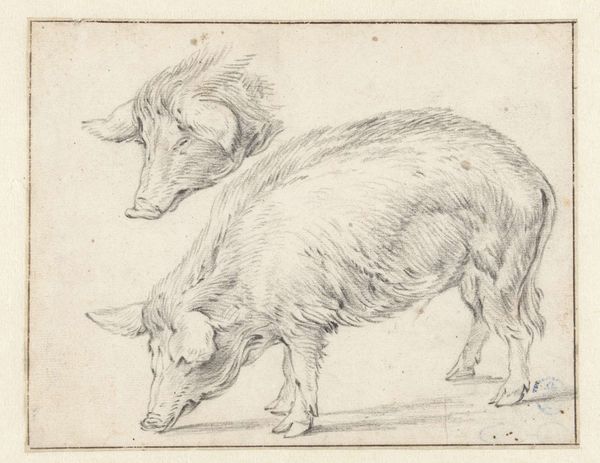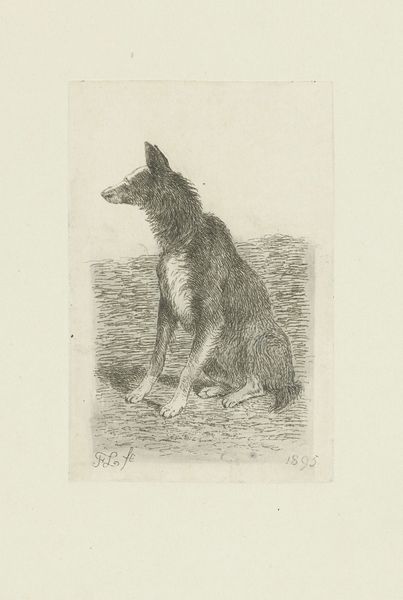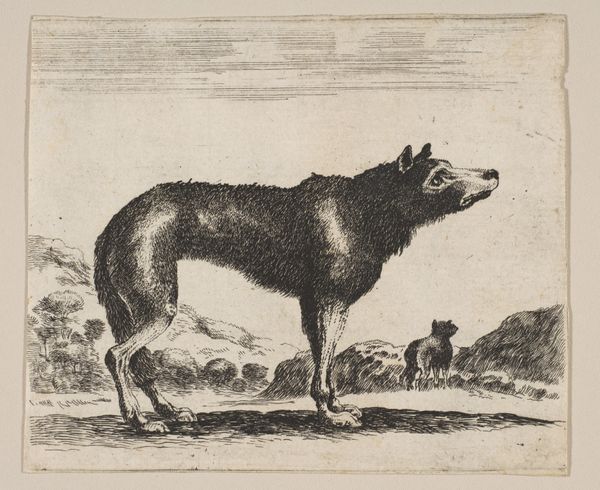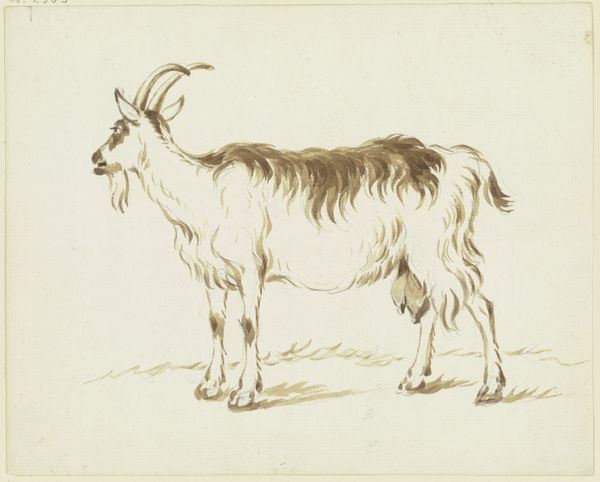
drawing, print, paper, ink, pencil, chalk
#
portrait
#
drawing
#
animal
#
dutch-golden-age
# print
#
pencil sketch
#
paper
#
ink
#
coloured pencil
#
pencil
#
chalk
#
realism
Dimensions: 155 × 204 mm
Copyright: Public Domain
Curator: Allow me to introduce "Wolf," a drawing completed in 1655, brought to us by Jan van Os. What’s your immediate take? Editor: It feels…vulnerable. Not what I expect from a wolf portrait. The light pencil strokes make the creature appear almost frail. You can see how he struggles with the representation of depth, but this has a good feel for gesture. Curator: Vulnerability is an interesting observation. Van Os created this piece using ink, chalk, and pencil on paper. Knowing these materials, how does that inform your reading of it? Editor: Immediately I think of accessibility. Chalk and pencil—those aren’t precious materials. It points towards a democratized practice, almost a form of visual note-taking rather than a grand statement. This would have allowed much more natural freedom. There is a beautiful sketch dynamic, no corrections or rework. He just puts the lines in paper. Curator: It speaks to a changing dynamic. "Wolf" reflects the burgeoning interest in naturalism of the Dutch Golden Age. A kind of observational realism. Is this choice of "accessible materials," as you say, also part of that movement? Editor: I think so. This wolf isn’t rendered heroically or symbolically like a medieval crest. We don’t get the teeth and fangs depiction that it's usually linked to this animal figure. This is an attempt, as far as I see, to capture the animal as it is. Its material modesty reinforces that aim. Curator: The wolf certainly lacks ferocity. More contemplative. The landscape is also minimal; a few sparse trees in the background. And it uses light and shadow so well, not something necessarily evident in drawing practices. Do you feel Van Os made a good job? Editor: Certainly! There are limitations as a portrait on capturing nature with such common material means but that it is just beautiful: the paper itself, the soft shading… It lends a certain melancholic aura to the wolf. Curator: Agreed. It almost makes the viewer consider the wolf’s perspective. Makes me think what can we, humans, learn from observing this gorgeous creature with such care? Editor: Precisely. Perhaps, art should learn from labour as Van Os just did in "Wolf".
Comments
No comments
Be the first to comment and join the conversation on the ultimate creative platform.
